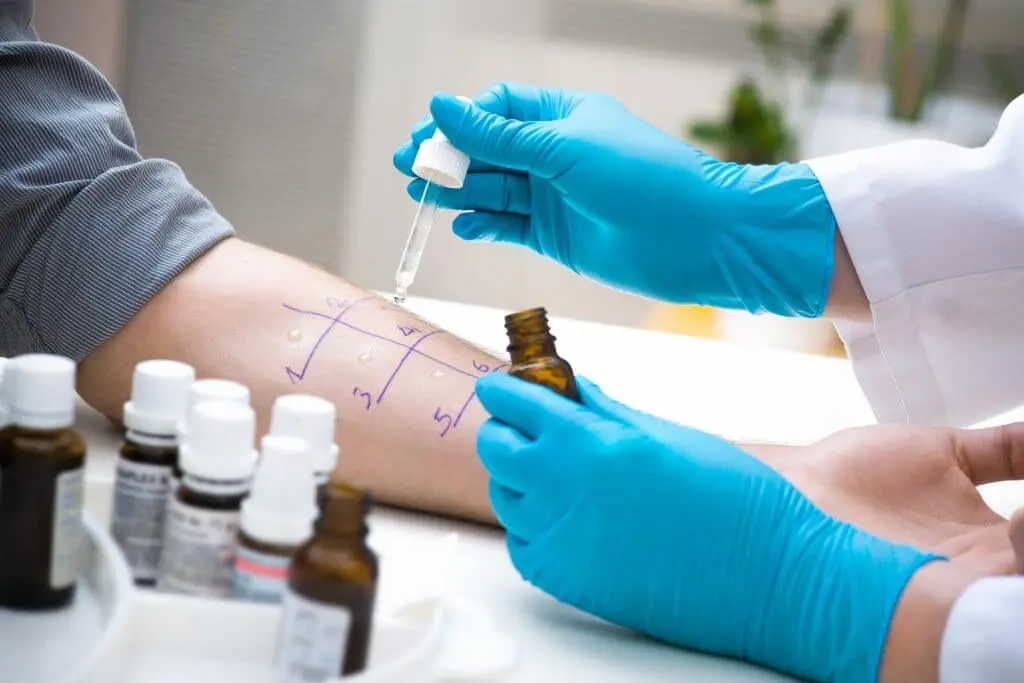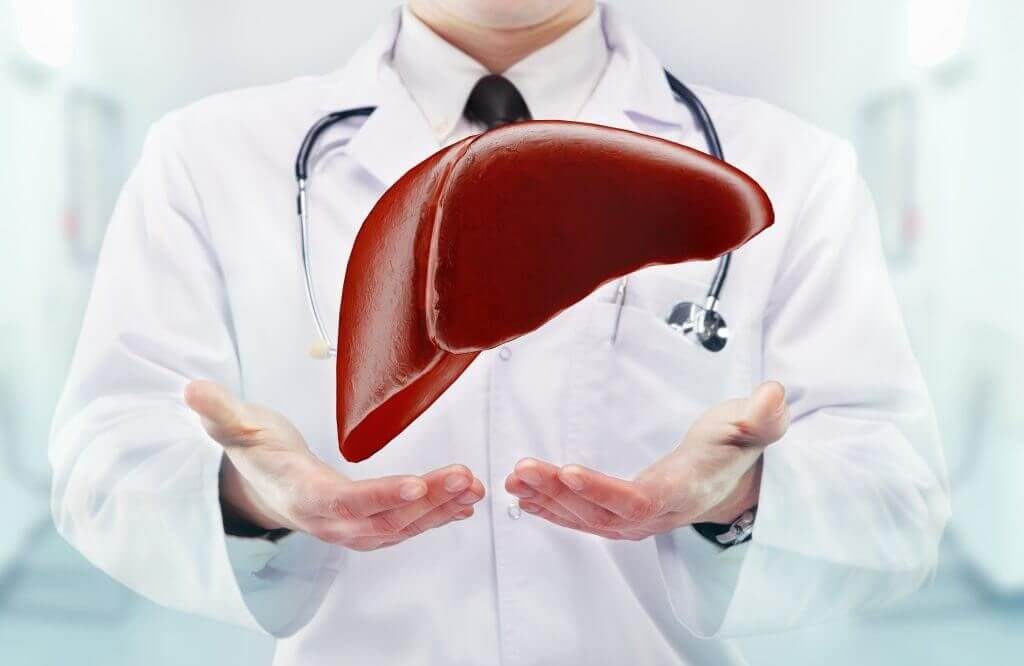Have you ever noticed that after drinking coffee every day— you become less affected by it?

You can have two, three, or even four cups without any apparent side effects?
What you’re experiencing is tolerance.
You’re “tolerating” the caffeine in the coffee because you’re body is less responsive to it than before you drank it everyday.
Tolerance is a common phenomenon in the medical industry with pharmaceutical drugs— and it can be a big problem.
The problem is that as tolerance increases, the dose also needs to increase. Eventually, the effective dose can become so high it becomes dangerous through its effects on other organs, especially the liver and kidneys.
It’s therefore useful to understand ways to manage tolerance so that the effective dose can remain within safe levels.
What is Tolerance?
Tolerance is a concept that describes the bodies resistance to a medication. As tolerance develops, the drug has less of an effect on the body.
In order to keep producing the desired effects, the drug has to be taken at increasingly higher doses.
Many different drugs cause this effect, including:
- Opioids like morphine, codeine, and heroin
- Caffeine
- SSRIs (antidepressants)
- Benzodiazepines
- Alcohol
- Nicotine
In most cases, drug tolerance is a bad thing, because it means the effects of a drug are reduced. In some cases, however, tolerance can be useful.
Take for example the use of allergen therapy.
This involves exposing the body to small doses of a compound it’s allergic to.
By exposing the body to these compounds in small amounts every day, and gradually increasing the dose, the body will eventually start to tolerate it and becomes less allergic.
Exclusive offer to all our readers: ModafinilXL offers a free sample pack of generic modafinil from India delivered by mail straight to your doorstep. It's already in your cart >>>
Modafinil is an excellent product; it really helps give me an extra boost when working two jobs; one late night job. It also helps my mood and overall well being. No side effects, works like a charm.

Where to Buy Modafinil
For information on buying modafinil, check out our recent buyers guide to modafinil in 2022.
Our favorite supplier is ModafinilXL. They offer competitive prices, multiple forms of payment, and excellent customer service. We can’t recommend them enough.
- Modalert 200mg
- Modvigil 200mg
- Waklert 150mg
- Artvigil 150mg
-
Modalert 200mg
-
Company
-
Core Ingredient
Modafinil
-
Price from
$0.53 in 7 days $2.99 in 3 days >
-
Dosage
Between
50 – 200 mg per day -
Coupons
Pay with crypto -20%ENJOYMXL10 for -10%
-
Good for
-
Alertness
-
Mental Focus
-
Agility
-
Energy
-
Motivation
-
-
Effect hours
-
Onset 1 hr.
-
Peak 6 hr.
-
Drop 2 hr.
- Buy Now
-
Modvigil 200mg
-
Company
-
Core Ingredient
Modafinil
-
Price from
$0.39 in 7 days > $2.99 in 3 days >
-
Dosage
Between
50 – 200 mg per day -
Coupons
Pay with crypto -20%ENJOYMXL10 for -10%
-
Good for
-
Alertness
-
Agility
-
Energy
-
Cognition
-
Motivation
-
-
Effect hours
-
Onset 2 hr.
-
Peak 5 hr.
-
Drop 3 hr.
- Buy Now
-
Waklert 150mg
-
Company
-
Core Ingredient
Armodafinil1
-
Price from
$0.59 in 7 days > $2.99 in 3 days >
-
Dosage
Between
50 – 150 mg per day -
Coupons
Pay with crypto -20%ENJOYMXL10 for -10%
-
Good for
-
Mental Focus
-
Agility
-
Energy
-
Cognition
-
Motivation
-
-
Effect hours
-
Onset 3 hr.
-
Peak 8 hr.
-
Drop 1 hr.
- Buy Now
-
Artvigil 150mg
-
Company
-
Core Ingredient
Armodafinil
-
Price from
$0.41 in 7 days > $2.99 in 3 days >
-
Dosage
Between
50 – 150 mg per day -
Coupons
Pay with crypto -20%ENJOYMXL10 for -10%
-
Good for
-
Mental Focus
-
Agility
-
Cognition
-
Motivation
-
-
Effect hours
-
Onset 2 hr.
-
Peak 6 hr.
-
Drop 2 hr.
- Buy Now
There Are 2 Main Types of Tolerance a Drug Can Produce:
Tolerance can happen through two main mechanisms, both of which are involved in modafinil tolerance; desensitization tolerance, and metabolic tolerance.
1. Desensitization (Pharmacodynamic) Tolerance
Most drugs produce their effects by activating protein receptors on the surface of our cells.
Desensitization happens when the cells reduce the number of receptors a particular drug binds to. It does this to lower the chances of having the drug find and activate these receptors, effectively lowering its potency.
Imagine you give you have a website promoting your services. On your website, you have a button that gives anybody a direct line to your personal phone. At first, you get a few customers and everything is going great.
Eventually, as you become more busy with these customers, it becomes too difficult for you to manage the constantly ringing phone lines.
In order to prevent your phone from ringing constantly, you may set the direct connection button on your site to only show every second day. This effectively cuts your phone ringing in half, allowing you to do the work your customers are asking for.
2. Metabolic (Pharmacokinetic) Tolerance
Virtually every compound that enters our body, with the exception of some minerals, are eventually processed by the liver and eliminated through feces or urine. This includes modafinil.
The liver is the most complex part of this process.
A series of highly specialized enzymes (called CYP450 isoenzymes) are responsible for converting active, and non-water soluble compounds into inactive, water-soluble compounds. It then becomes the kidneys responsibility to filter these compounds out of the bloodstream.
Our bodies are very efficient and will adapt to our environments in more ways than we could ever fully understand. The liver enzymes are a major part of this adaptation.
Our liver enzymes are very dynamic and will change according to our diet and the compounds that end up in our bloodstream.
With metabolic tolerance, these enzymes become elevated to clear the drug from the system faster.
An example of this can be made with alcohol. People that consume large quantities of alcohol for long periods of time have been shown to have significantly higher CYP2B6, which is responsible for breaking down alcohol in the liver [1]. This causes alcoholics to have to drink more alcohol to reach the same level of intoxication as time goes on.

Does Modafinil Cause Tolerance?
The question of whether or not modafinil causes tolerance is difficult to answer. Some evidence suggests that it does, while others suggest it doesn’t.
When you look at the biochemical pathways of modafinil, it’s easy to make assumptions that it not only develops tolerance but can even be addictive.
Modafinil binds to the same receptors as the tolerance-forming and highly addictive drug, cocaine (though in a slightly different context) [4]. Cocaine has been shown to develop tolerance after just a single dose [5].
Tolerance and addiction are often closely connected. One study concluded that “because drugs that increase dopamine have the potential for abuse, and considering the increasing use of modafinil for multiple purposes, these results suggest that risk for addiction in vulnerable persons merits heightened awareness.” [4].
Other studies have conversely found no tolerance forming or addictive potential of modafinil.
A large retrospective study involving 105 different patients taking modafinil found no significant differences in their dosage from the start of their prescription to the end [3].
This suggests that the participants in the study didn’t develop tolerance to the drug.
In fact, researchers in this study even found that those who were diagnosed with bipolar disorder actually had a lower dose at the end of the study, which is the opposite of what you would expect with tolerance-forming medications.
On top of this research, there is a large community of people on places like Reddit sharing their experiences with modafinil. Many people are reporting some tolerance to the medication. The effects produced by the drug seemed to be diminishing over time.
An article in the New Yorker touched on this some more, discussing a Poker player that took modafinil so much, it eventually stopped working altogether.

How to Manage Modafinil Tolerance
Now that we understand the difference between desensitization tolerance and metabolic tolerance, we can highlight some ways we can avoid it.
Managing Desensitisation Tolerance to Modafinil
Desensitization tolerance usually takes a long time to develop. The body needs to be exposed to a particular compound for a long period of time before the cells start to down-regulate receptors on the cell surface. The decision to do this happens at the level of the DNA itself.
In the case of modafinil, these receptors are things like TAAR1 and D2 which activate the dopamine transporters (DAT).
By far the best way to avoid a down-regulation of TAAR1 and D2 is to cycle the drug.
Drug cycling involves taking it for a while, followed by periods of drug abstinence. This can be something like 3 days on, 1 day off, or 3 weeks on, 1 week off. There are many different philosophies for doing this.
The periodic breaks from having the drug allow dopamine levels to decrease for a time. This gives the cells a reason to need the TAAR1 receptors and will reduce the chances of having them down-regulated (therefore producing tolerance).
Managing Metabolic Tolerance to Modafinil
Metabolic tolerance to modafinil is far more common than desensitization tolerance.
The way we tackle problems like this is to identify what enzymes the liver uses to breakdown modafinil. Luckily, in order for a drug to be approved for sale in most countries, this research needs to be done as part of the vetting process.
One such study states that modafinil is metabolized by CYP1A2, CYP2B6, CYP2C9, CYP2C19, and CYP3A4/5 enzymes [8]. The main one involved with modafinil is CYP2C19.
This means that when we take modafinil for long periods of time the CYP2C19 enzyme activity in our liver increases in order to clear it from the body quicker. In order to stop this, we need to slow down this specific set of enzymes.
Some Examples of Herbal CYP2C19 Inhibitors:
- Bacopa (Bacopa monnieri) [9]
- Barberry (Berberis vulgaris) [10]
- California Poppy (Eschscholzia californica) [11]
- Chaste Tree (Vitex agnus-castus) [12]
Perhaps the best inhibitor of this enzyme is grapefruit juice.
Many modafinil users take grapefruit juice (real grapefruit, not from concentrate), to increase the effects of their medications and avoid tolerance.

Concluding Thoughts
It’s not clear in the medical research whether modafinil produces tolerance or not, however, there are plenty of anecdotal reports of users experiencing tolerance with regular use.
The best way to avoid tolerance with modafinil (and other drugs) is to cycle the medication. The more breaks you have, the lower your chances are of developing tolerance.
Many people will start with a day free from modafinil every fourth day. Other users take one entire week off per month.
The other way many people prevent or reduce tolerance is to take herbs or supplements that block liver metabolism of the drug while they take it. The most common supplements people take for this are grapefruit juice, bacopa, and barberry.
References
- Olmo Pérez, L. (2016). Consequences of the different enzyme alleles regarding alcohol tolerance among populations.
- Tsai, H. J., Wang, S. C., Liu, S. W., Ho, I. K., Chang, Y. S., Tsai, Y. T., … & Liu, Y. L. (2014). Assessment of CYP450 genetic variability effect on methadone dose and tolerance. Pharmacogenomics, 15(7), 977-986.
- Nasr, S., Wendt, B., & Steiner, K. (2006). Absence of mood switch with and tolerance to modafinil: a replication study from a large private practice. Journal of affective disorders, 95(1), 111-114.
- Volkow, N. D., Fowler, J. S., Logan, J., Alexoff, D., Zhu, W., Telang, F., … & Hubbard, B. (2009). Effects of modafinil on dopamine and dopamine transporters in the male human brain: clinical implications. Jama, 301(11), 1148-1154.
- Mendelson, J. H., Sholar, M., Mello, N. K., Siew Koon Teoh, M. D., & Sholar, J. W. (1998). Cocaine tolerance: behavioral, cardiovascular, and neuroendocrine function in men. Neuropsychopharmacology, 18(4), 263-271.
- Meyer, J. H., Krüger, S., Wilson, A. A., Christensen, B. K., Goulding, V. S., Schaffer, A., … & Kennedy, S. H. (2001). Lower dopamine transporter binding potential in striatum during depression. Neuroreport, 12(18), 4121-4125.
- Schneier, F. R., Liebowitz, M. R., Abi-Dargham, A., Zea-Ponce, Y., Lin, S. H., & Laruelle, M. (2000). Low dopamine D2 receptor binding potential in social phobia. American Journal of Psychiatry, 157(3), 457-459.
- Robertson, P., Decory, H. H., Madan, A., & Parkinson, A. (2000). In vitro inhibition and induction of human hepatic cytochrome P450 enzymes by modafinil. Drug Metabolism and Disposition, 28(6), 664-671.
- Ramasamy S, Kiew L. & Chung L. (2014). Inhibition of Human Cytochrome P450 Enzymes by Bacopa monnieri Standardized Extract and Constituents.Molecules, vol.19(2),p.2588-2601.
- Guo Y, Chen Y, Tan Z, Klaassen C. & Zhou H. (2012). Repeated Administration of Berberine Inhibits Cytochromes P450 in Humans.European Journal of Clinical Pharmacology, vol.68(2),p.213-217.
- Manda V, Ibrahim M, Dale O, Kumarihamy M, Cutler S, Khan I, Walker L, Muhammad I. & Khan S. (2016). Modulation of CYPs, P-gp, and PXR by Eschscholzia californica (California Poppy) and Its Alkaloids.Planta Medica, vol.82(6),p.551-558.
- Ho S, Singh M, Holloway A. & Crankshaw D. (2011). The effects of commercial preparations of herbal supplements commonly used by women on the biotransformation of fluorogenic substrates by human cytochromes P450.Phytotherapy Research, vol.25(7),p.983-989.





